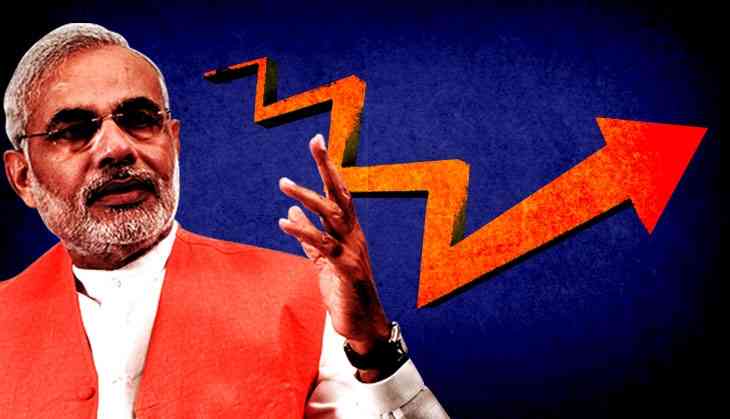India can survive demonetisation, GST and low growth. And Modi govt has nothing to do with it

Finance Minister Arun Jaitley has been trying to convince the world that the Indian economy would be back on track very soon. He has been saying that its fundamentals are strong and India will remain the world's fastest growing economy in the coming years.
What Jaitley says is true. But he can't seek credit. Given the size of India's economy and young population, the country has the potential to grow at 10% per annum. Despite this, the last time India's growth reached anywhere close to its full potential was in 2007-08, when the GDP grew by 9.32%.
Since then, it has been a story of missed opportunities for a million-plus youth who enter the job market every month.
By 2020, 64% of India's population will be in the working age group by 2020, with an average of 29 years. With this kind of demography, China grew by above 10% for more than two decades.
Shock of demonetisation & GST
The Indian economy is likely to recover from the shock of demonetisation and GST over the next one year. If we take SBI's estimated, India may grow by 6% in the second quarter of the current financial year.
“In the first quarter, GDP grew at 5.7%, causing a lot of heartburn, but we strongly believe that the second quarter growth is likely to trend higher and might be in the lower end of 6-6.5% band with an upward bias,” SBI Research said in a report on Monday.
Futuristic people can look at the growth projections for 2019-20 made by World Bank for India, that estimates India's potential at 7.4%.
This means, by the time the NDA government's term ends – irrespective of whether this government is re-elected to power or not – India would have achieved 2.6% less than its average potential as a young nation.
However, this is not the only blame that current government will have to take by the end of its first term.
A study conducted by Care Ratings on employment generation reveals that the total number of employees in 1,473 companies grew to 5.18 million in FY17 from 5.01 million in FY15, which is a growth of a little over one percentage point per year compared to over around 7% growth in GDP.
Since the study conducted by Care is just based on data from the organised sector, one can easily imagine the state of the unorganised sector which is reported to have generated negative job growth over the past one year as over a million people were reported to have become jobless post demonetisation.
Here, one must not forget that even the UPA government that was in power between 2004-2014, despite giving India above 9% growth rate for three years had a similar record on job generation.
Between 2004 and 2019 – a period of 15 years – India would have grown by roughly around 7.5% per annum. However, the growth in job generation in the same period would be just above 1 percentage point.
One should not be surprised to see subdued demand in the economy since 2008, which has not picked up despite many tax breaks and loan waivers announced by the government over these years. Whatever growth India is achieving at the moment it is on the back of middle and the upper middle-class expenditure.
A failed model of growth
What the large gap between India's GDP growth and job creation suggests is that the growth model followed hitherto is not working for India's demographic.
While we are yet to hit our peak in terms of demographic dividend, but a significant time has already been lost. Whichever government political party comes to power post-2019 elections in India, it will have to create an economic policy which is different from the one followed since 2004.
First published: 1 November 2017, 18:34 IST

